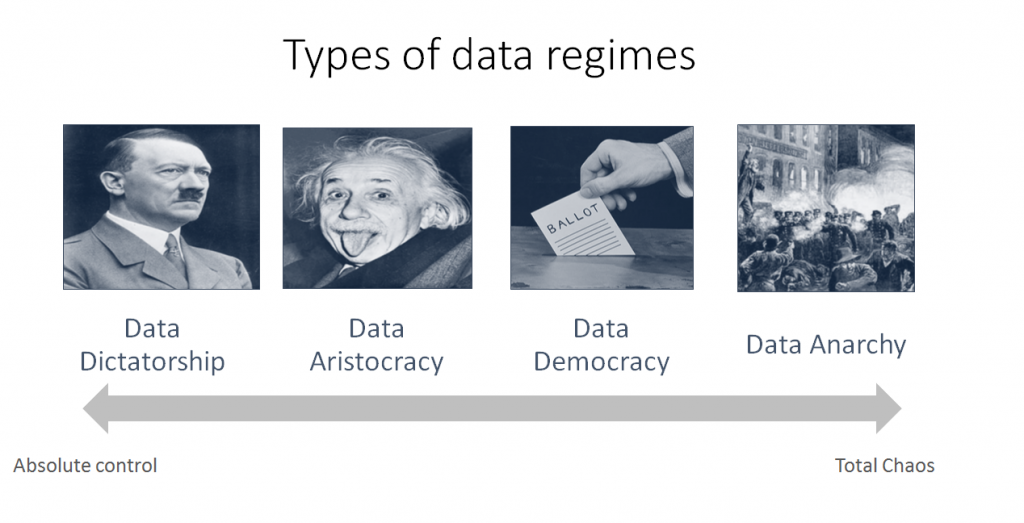It has been said that democracy is the worst form of government except all the others that have been tried. -Winston Churchill
Democracy has changed the world. It is widely acknowledged as a positive and uplifting force – an ideal to be emulated. Small wonder that people talk about liberating and democratizing data. Public data sets are easier to democratize. But what about corporate data for employees? I find it ironic that many large corporations have more in common with dictatorships than they do with the democracies.
Consider this. Corporate leaders are not elected. Organizational structures are rigid and hierarchical. Information flows up the chain of command and orders flow down. Discipline and coordination are imposed from above to ensure compliance with plans. Insubordination gets you fired!
In summary, large corporations are dictatorships. Benevolent perhaps, but dictatorships never the less.
This irony is that dictatorships work. Or at least, have worked well historically. The looming question is – will they continue to work?
Flat and matrixed organizations are more democratic. Decision making authority is distributed. Information flows horizontally and vertically. But flat organizations have a hard time scaling. And matrixed organizations have their problems too.
This leads me to wonder, are hierarchies, and by extension dictatorships, just a part of human nature? Can you have a real “data democracy” when organizational structures impede the free flow of information?
No.
However, change is around the corner. The rise of “data-driven decision making” and “democratization of data” is causing a shift in power. If you believe the analogy – data is the new oil – it should be obvious that those who control data will have enormous clout. With the right training, skills and passion, even a modest data analyst can become a power center.
This shift in power is giving rise to the idea of data regimes, loosely defined as: organizational structures and behaviors caused by the desire to control or harness data. While data regimes are not a consciously acknowledged construct, they will influence organizational structures for years to come. Organizations have already experimented with a variety of data regimes with varying degrees of success.
Some of the approaches that I have observed include:
- Data Dictatorship – IT or some group controls access to data and is restrictive about its use. There is asymmetric distribution of information primarily based on your position in the pecking order.
- Data Aristocracy – Data scientists and PhDs are needed to do anything meaningful. Power concentrates in the hands of these data priests and their benevolent masters.
- Data Democracy- Everybody gets timely and equitable access to data. Line of business users are empowered and “own” the data. Executives and IT get out of the way.
- Data Anarchy – Business users feel underserved and take matters into their own hands. They create “shadow IT” systems and work around the “unresponsive” IT group. This type of scenario arises when executives don’t provide clear guidelines for interaction between business and IT.
It is noteworthy that these regimes don’t exist as discrete entities. They are part of a continuum. Each type of regime is subject to various flaws and pitfalls. A healthy data-driven culture must be constructed from elements of each.
In Part 2 of this series I will talk about which type of data regimes will dominate, why, and how you can position yourself for success.
This blog was originally written by me here.

Leave a Reply